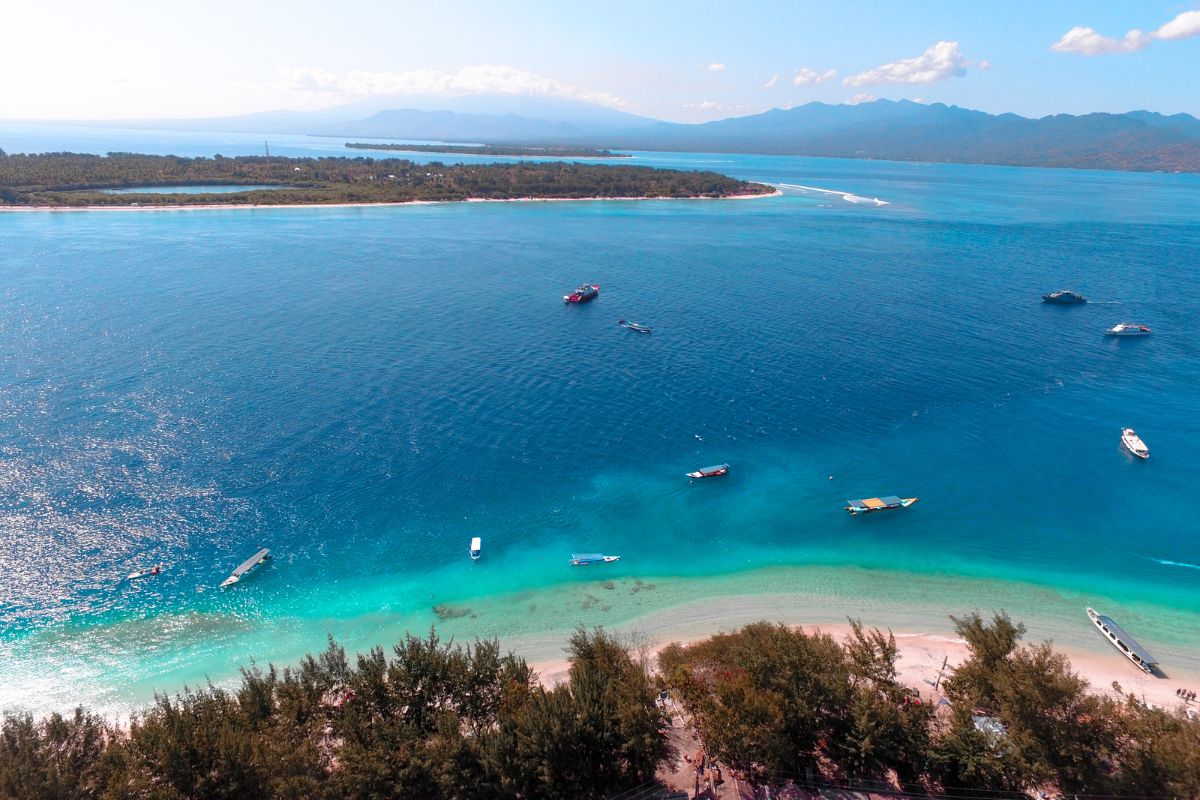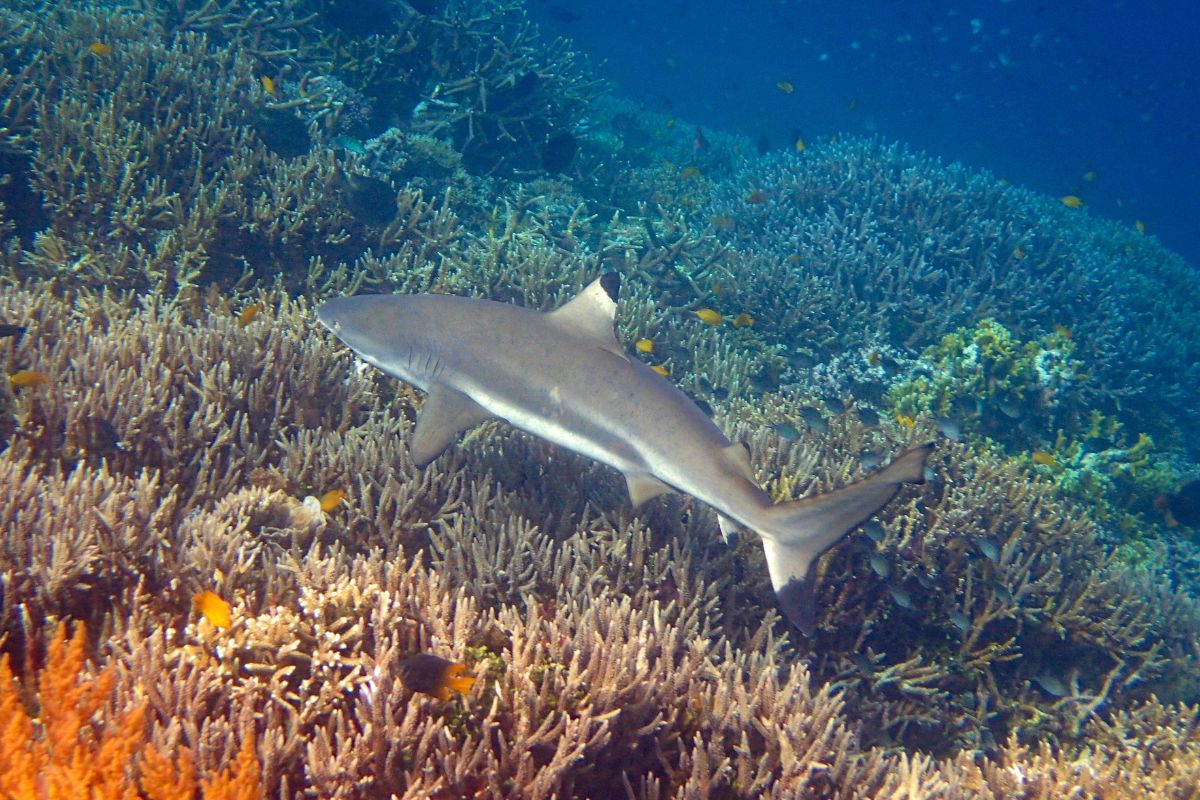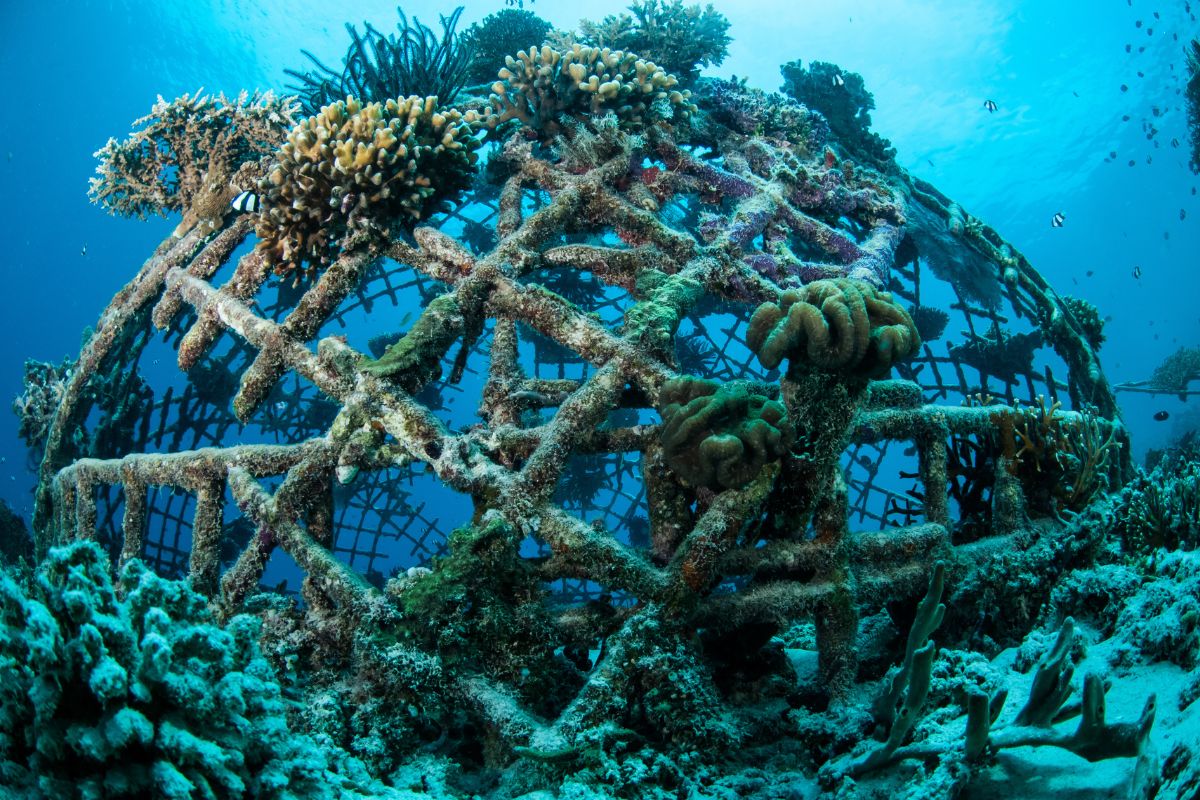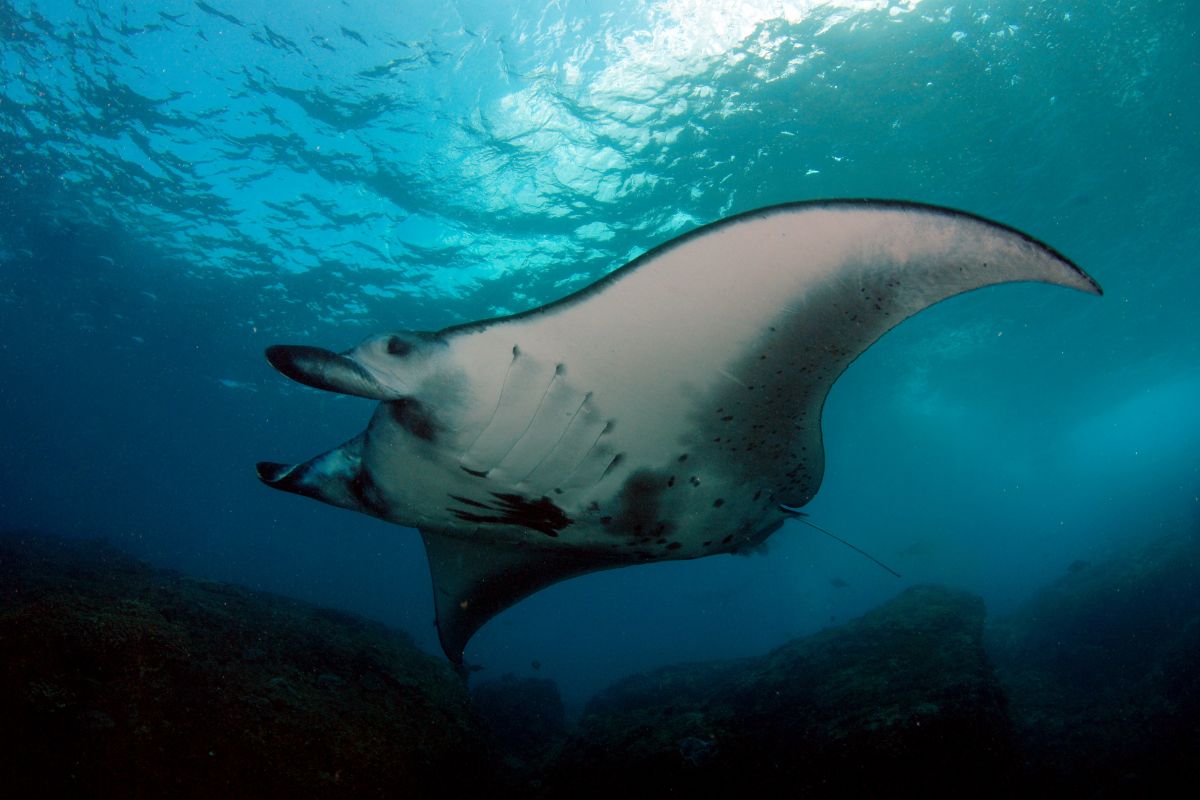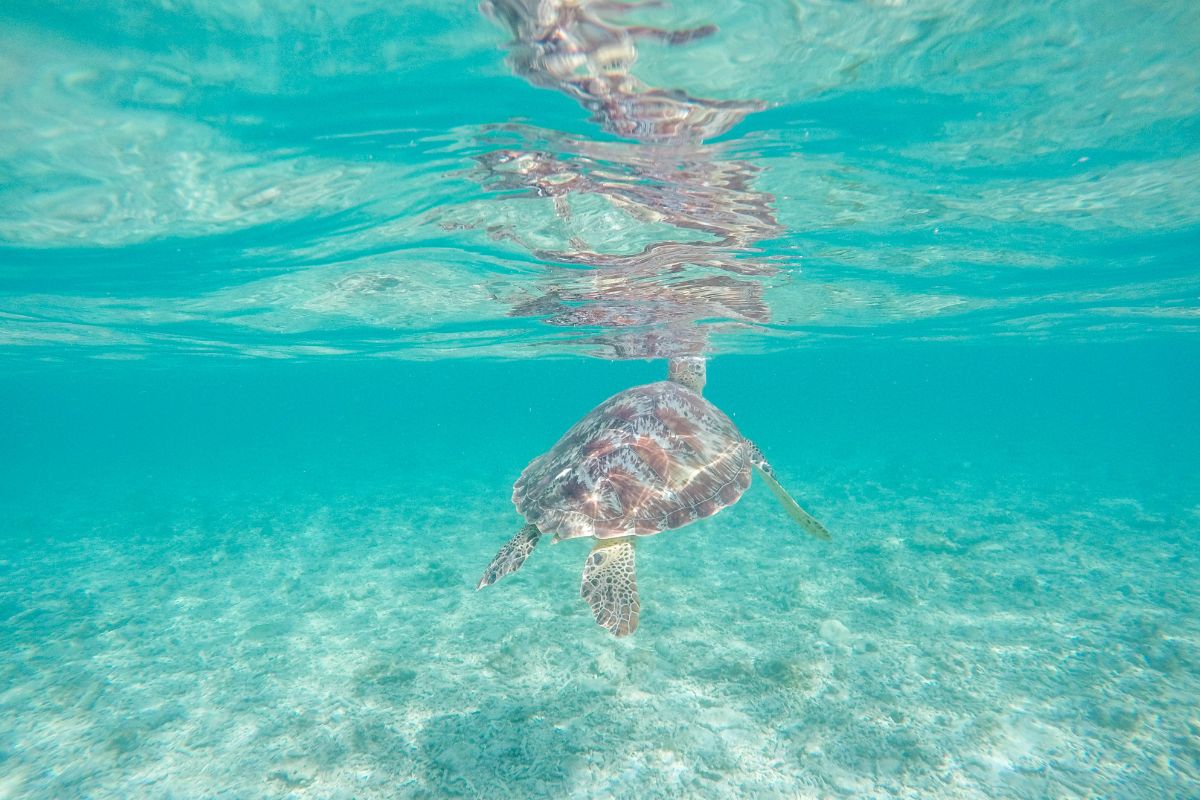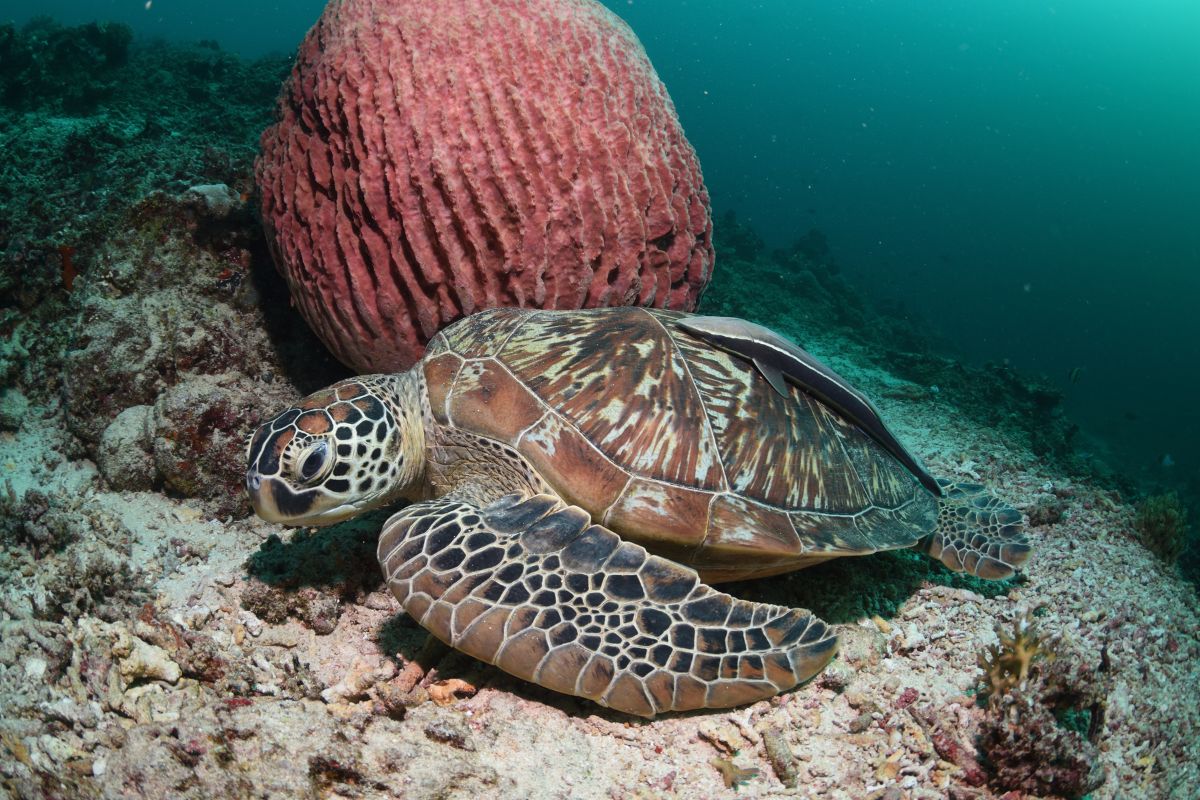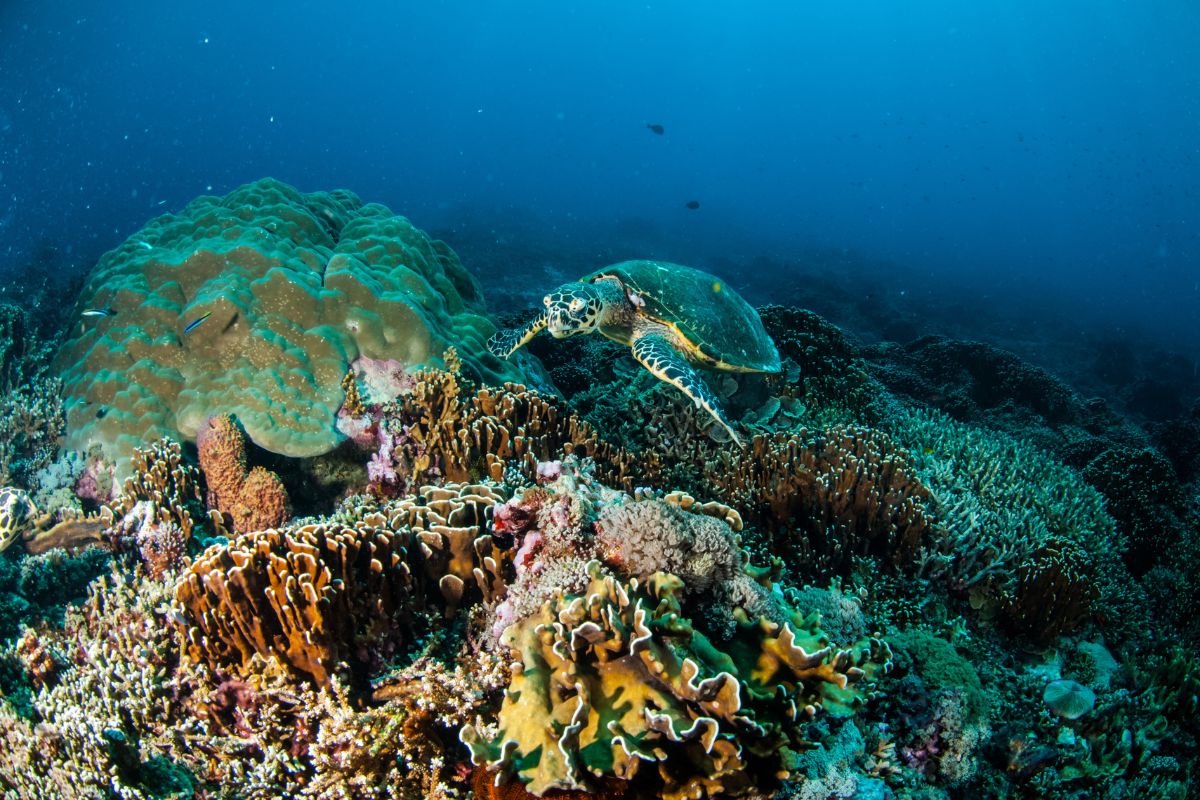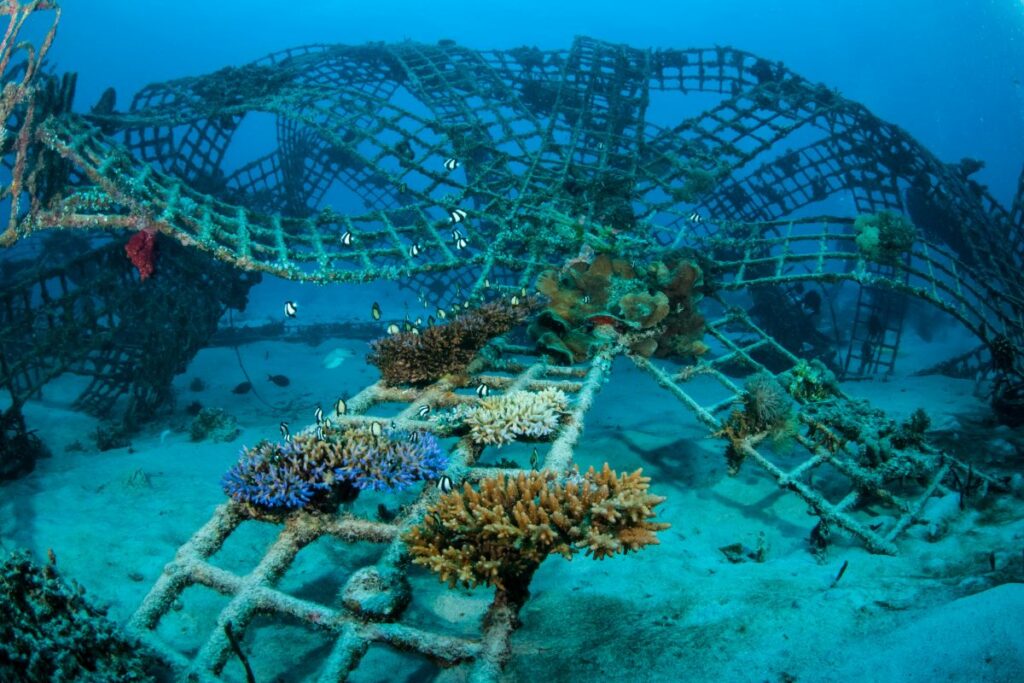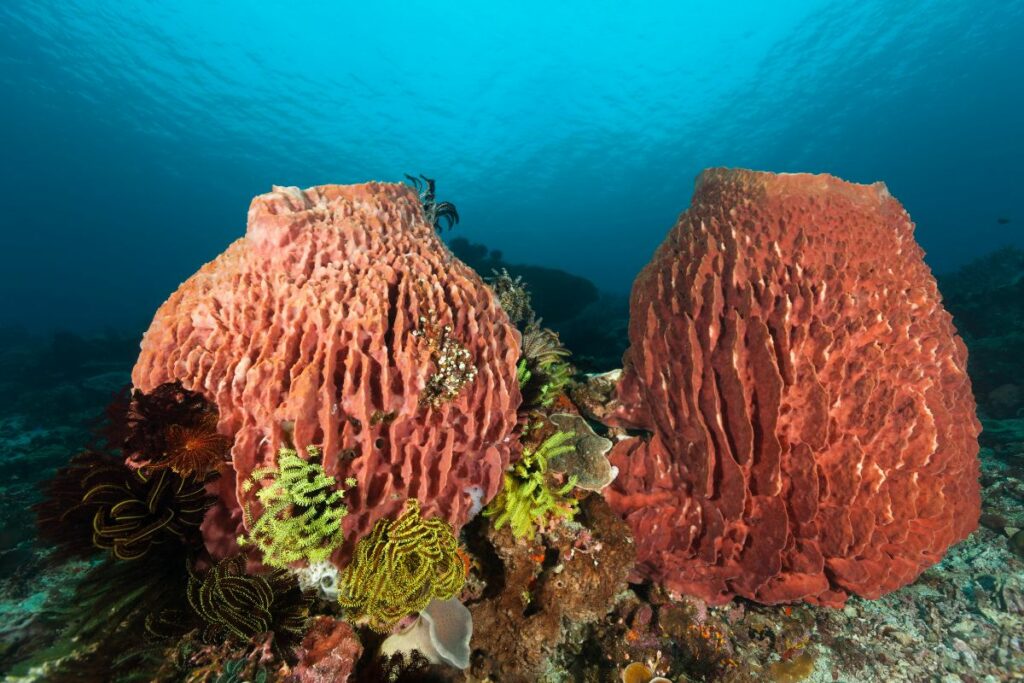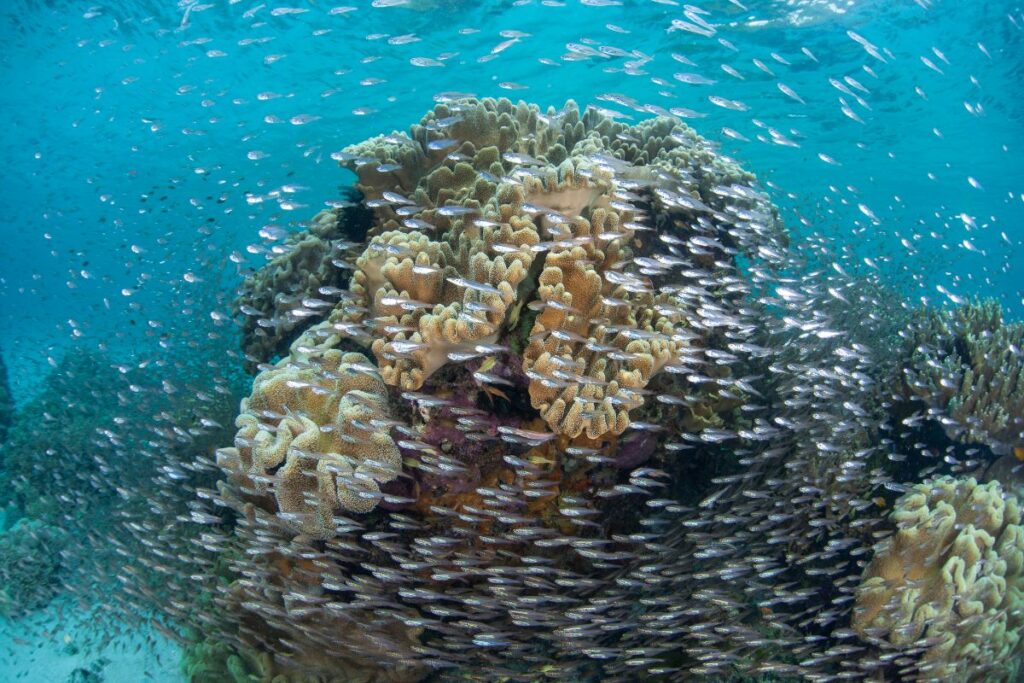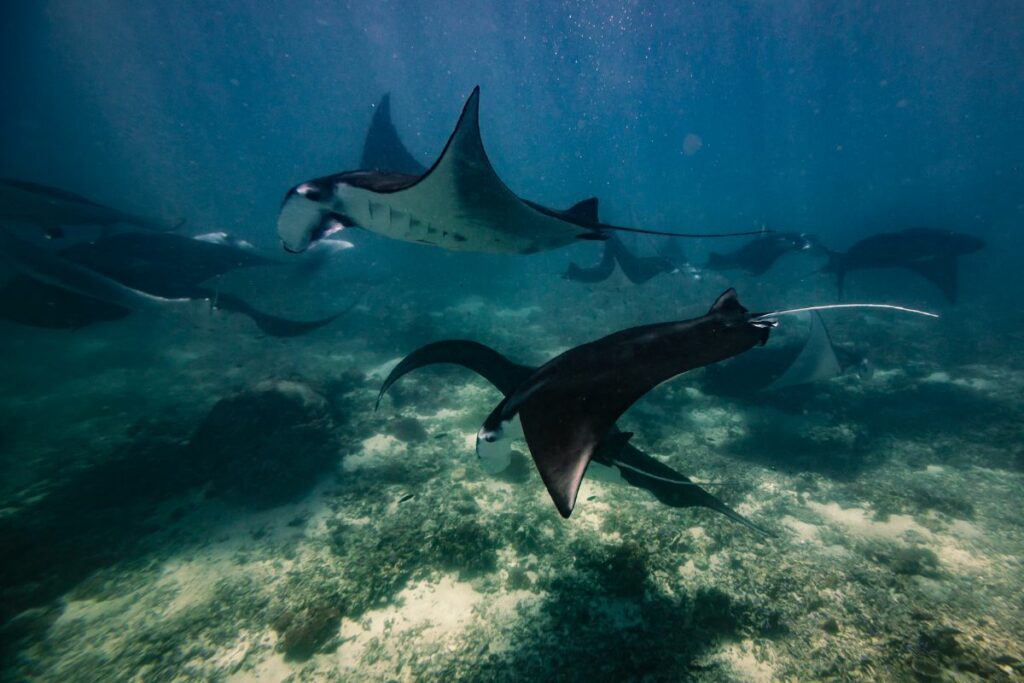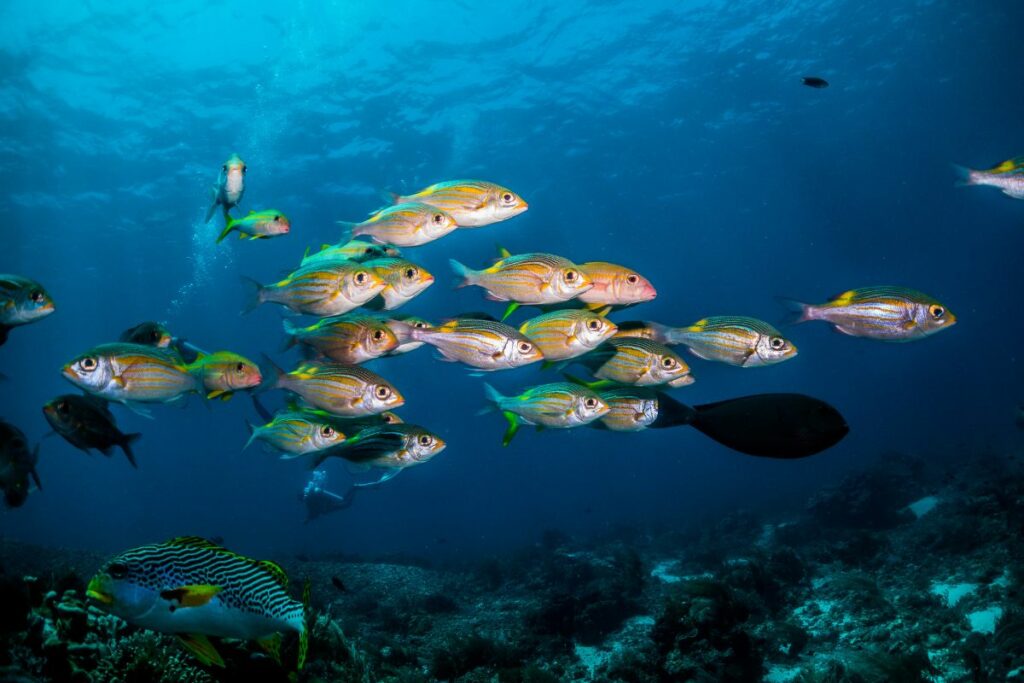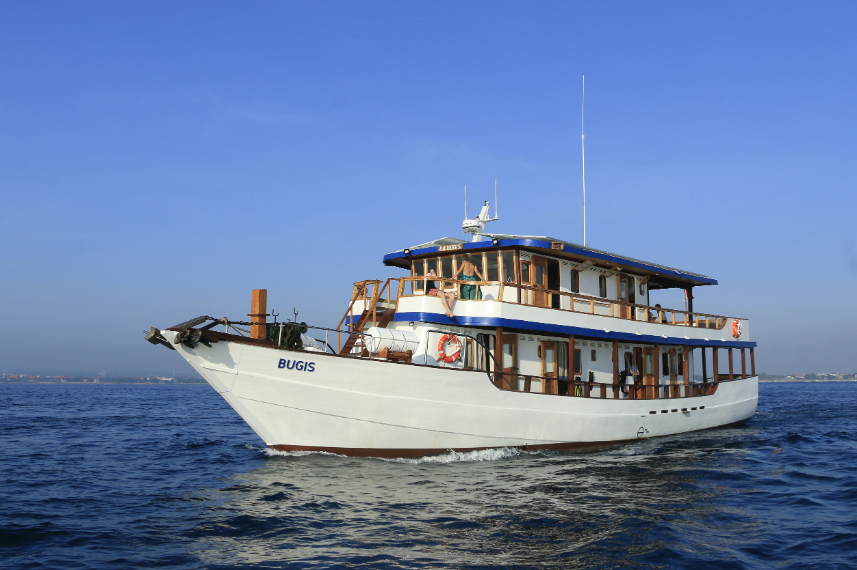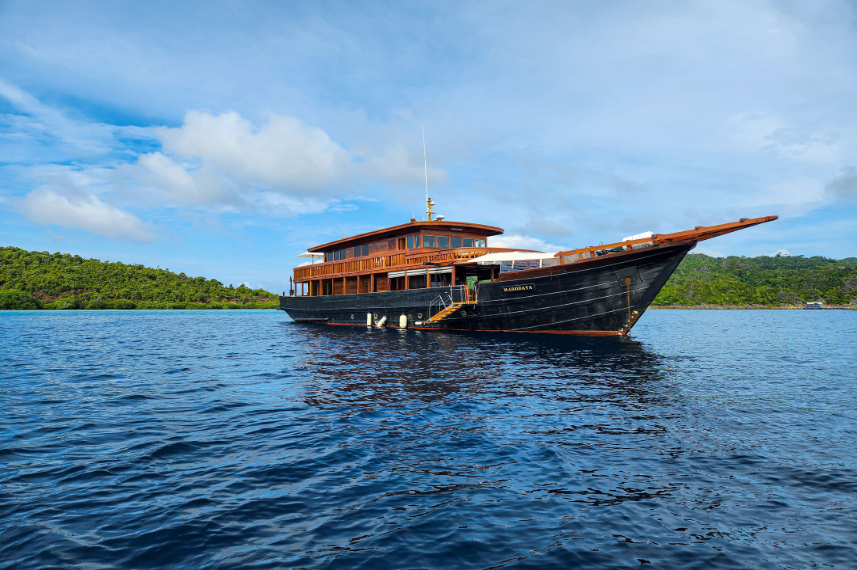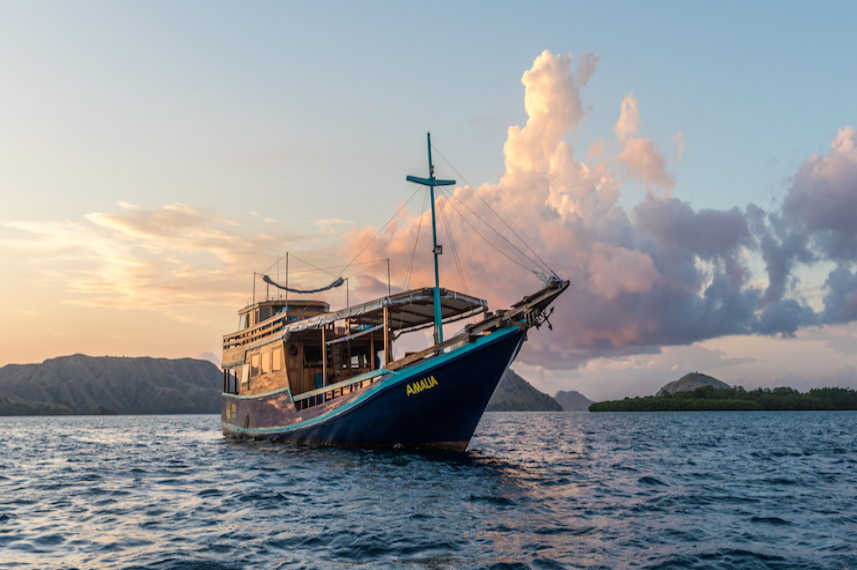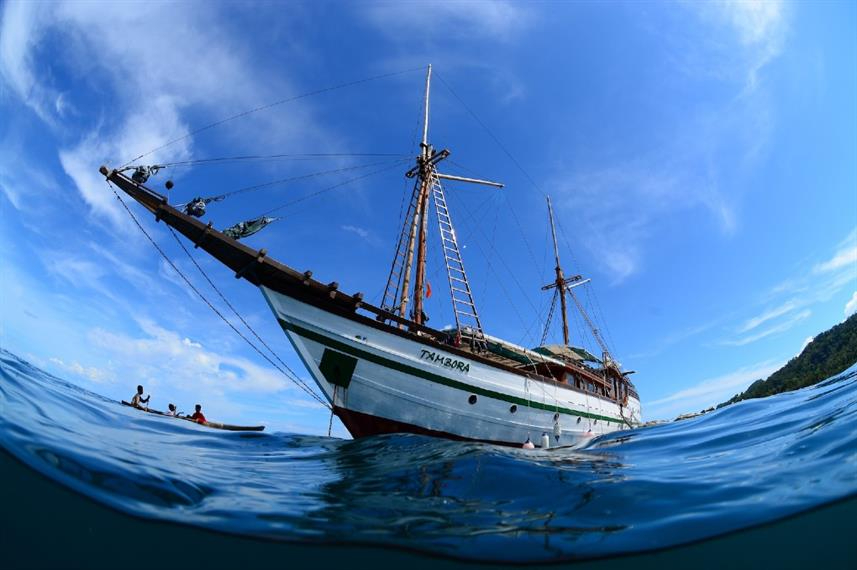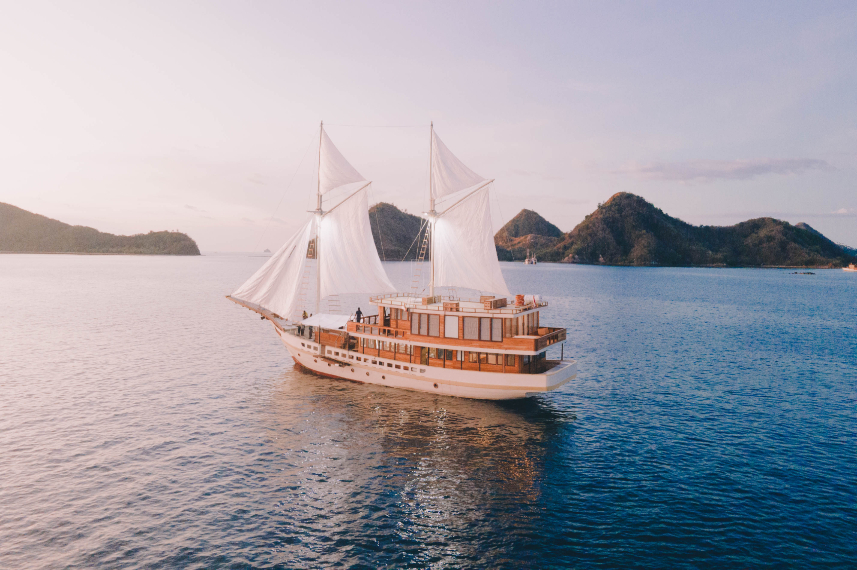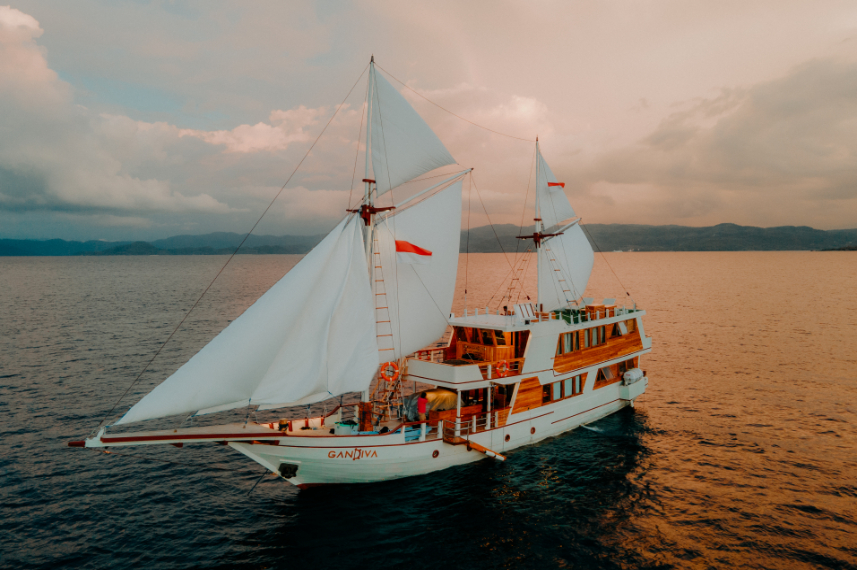Gili Trawangan
The three Gili (Trawangan, Meno, and Air) have been seen as a must-visit, especially when Bali is included in the conversation due to their short distances. These three islands in Lombok may be small, particularly Gili Trawangan (often shortened as Gili T). Still, the underwater topography and the marine life are definitely on the opposite side.
As part of the Indonesian throughflow, the large amounts of nutrients become one of the factors for big players, like manta rays in this region. Not to mention, the large turtle population has made Gili Trawangan impossible to miss. Gili Trawangan also boasts numerous dive centers that send familiarity to every diver.
Top highlights of Gili Trawangan
- Witness the graceful Hawksbill and green turtles roaming freely on the island
- Do not miss the chance to see manta rays gliding across the water during therainy season
- Head to over 100 points across the Gili Trawangan to admire Biorocks, theartificial reef project structures
- Shark Point is the site to be, particularly in the morning, to spot reef sharkspecies like whitetip, blacktip, and grey tip
About Gili Trawangan
Gili Trawangan is the most famous Gili for fellow travelers. Aside from being the largest one among the other two Gili islands (Air and Meno), Gili Trawangan is also the most developed one to cater to visitors. Various establishments in Gili Trawangan are solid proof of how developed this island is compared to Meno or Air. One of the best things about this island is that no motorized vehicles are allowed. Most of the transportation modes are bicycle and cidomo, the horse-drawn carriage.
This island is one of the main destinations in Lombok due to its short distance from Bali. During Silent Day in Bali, Gili Trawangan can be pretty busy for travelers due to the population being predominantly Muslim like the rest of Lombok island.
Diving in Gili Trawangan
Nightlife may be prominent in Gili Trawangan, but exploring the underwater wonder should also be high on the list. Several dive sites are scattered around the three Gili islands, but the ones in Gili Trawangan fall under the exceptional category.
From Biorocks, the artificial reef project initiated by Manta Dive to preserve the coral reefs and their inhabitants, to the stunning Halik, there are many sites to be explored. Different species of fish, such as barracudas, tunas, giant trevallies, snappers, sweetlips, groupers, and anemones, are regular visitors to this region. Stingrays, frogfish, ghost pipefish, lionfish, scorpionfish, parrotfish, and angelfish are also often found in most of the dive sites around Gili Trawangan.
Manta rays, mola-mola, and whale sharks have become special sightings as they can only be seen primarily during the rainy season when the waters are full of rich nutrients and plankton. Go to Gili Trawangan in November or December, and the chance to see these giant animals will likely happen. Reef sharks are also prominent in Gili Trawangan, especially in Shark Points. Whitetip, blacktip, and greytip reef sharks are often seen around the coral reefs.
Talking about Gili Trawangan is not complete without mentioning the turtles. Hawksbill and green turtles are in great numbers here, especially near the coral reefs. The three Gili have become a haven for this endangered species, making diving around the island more special as their presence is impossible to ignore.
Discover your next adventure in
The Turtle Capital of The World
Claiming certain places as a specialty is sometimes seen as a desperate attempt to attract tourists. But the claim about Gili (not only Gili Trawangan) as the turtle capital of the world seems fitting. The three Gili are the epitome of capital in the literal sense.
Two of the seven turtle species in the world can be found in the Gili islands: the Hawksbill and green turtles. These two turtles can be seen in most of the dive sites around the island, gliding gracefully in the water before resting or cleaning in areas with dense coral populations. The number of turtles that can be spotted during a single dive is astonishing, sometimes more than a dozen. It is not an exaggeration to say that Gili is the turtle capital of the world.
These turtles often nest on the three Gili, as illegal hunting does not threaten their presence. There are a few turtle conservation projects across the island, focusing mainly on protecting the nests and ensuring successful hatching.
Diving Environments in Gili Trawangan
Gili Trawangan may be a tiny island, but the types of diving that can be done around this island (and also the other Gilis) are not limited to one or two. The Gili islands have everything from walls, sloping reefs, and Biorocks to coral gardens and pinnacles.
The currents in Gili Trawangan are unpredictable, even in the best weather conditions. It is essential to communicate with the dive instructors prior to diving to guarantee a seamless and pleasant experience. The visibility in the area is excellent, especially during the dry season, with an average of 25-30 meters, but can reach up to 35 meters. During the wet season, the visibility decreases to 10-25 meters, and the increased plankton plays a part. But this condition attracts big fish like manta rays, whale sharks, and even mola-mola.
The water temperature in the Gilis is constant all year round. It falls between 28-29 degrees Celsius; in the rainy season, it sometimes falls one or two degrees from the regular temperature.
Discover your next adventure in
How to get to Gili Trawangan
Getting to Gili Trawangan is relatively simple. Though it is tempting to go by plane due to its short traveling time, getting to this island is better by boat. If you have a lot of time to spare and are looking for adventure, taking the ferry is an option, though it takes approximately six hours from Padang Bai Harbor to Lembar Harbor in Lombok.
The fast boat to Gili Trawangan from Padang Bai takes only about 1,5 hours. This is the shortest way to get to the island. There are other options to take the fast boat from Sanur or Serangan, but get ready to have longer trips from these two harbors. The traveling time from Sanur or Serangan is double that of Padang Bai, around 3-4 hours.
Diving Seasons & Weather in Gili Trawangan
Gili Trawangan is one of those dive destinations in Indonesia that can be accessed year-round, as the water temperature is constant and rarely drops below 27 degrees Celsius. The dry season lasts from May to October, while the wet season starts in November and ends around April. The peak diving season is from late June to August.
Diving during the rainy season is still possible since the Gili Islands are drier than Lombok and Bali. Even when it rains, it rarely lasts for days or weeks, making the dive enjoyable. If you wish to see manta rays, the rainy season is the best time to dive in Gili Trawangan since the waters are full of plankton.


